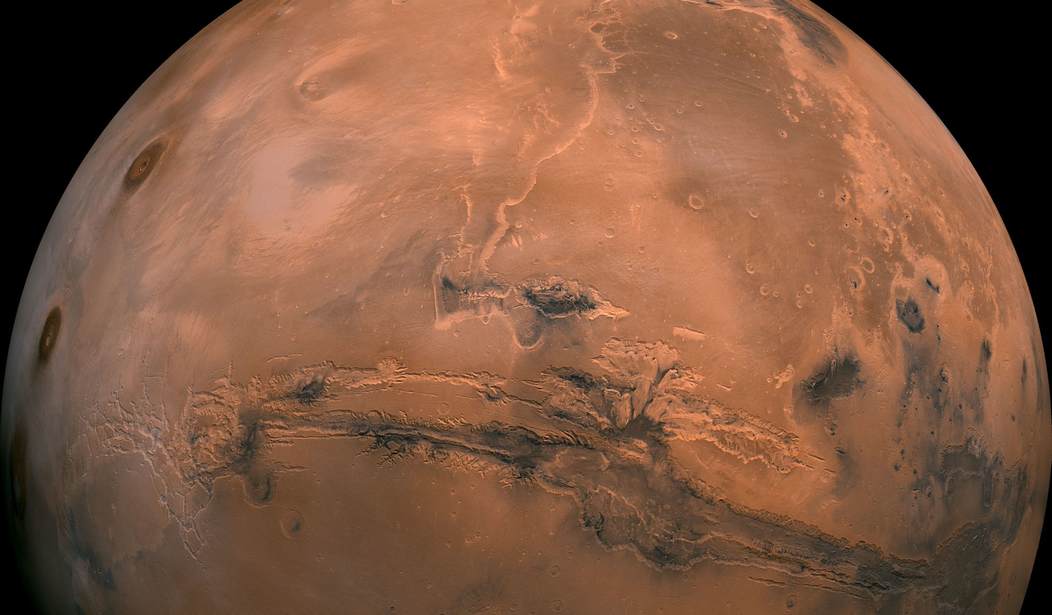The Mars Perseverance rover launched at 7:50 a.m. ET in from the Cape Canaveral Air Force Station in Florida, despite major and minor natural disasters. Its mission is to investigate signs of life on the Red Planet and collect environmental data using novel astronomical technologies.
“Perseverance is the most sophisticated rover NASA has ever sent to Mars, with a name that embodies NASA’s passion for taking on and overcoming challenges,” NASA said in a statement.
Today is a great day for American leadership in space! Congratulations to the teams at @NASA and @ulalaunch for successfully launching the nuclear-powered rover, @NASAPersevere, to Mars! #CountdownToMars https://t.co/phIDym9L9z
— Mike Pence (@Mike_Pence) July 30, 2020
A pandemic and an earthquake presented barriers to launch. NASA employees feared the mission would have to be postponed until 2022, but preparations continued. To memorialize perseverance during COVID-19, the designers attached a plaque to the rover's side depicting a globe and staff-and-serpent that represents the medical profession.
When asked how United Launch Alliance, a company that has provided launch services for every NASA expedition to Mars since the 1960s, navigated lockdown scenarios, President and CEO Tory Bruno said the company took “early and aggressive” approach to ensure the liftoff occurred on schedule. Employees wore PPE and maintained distance while working, surfaces were regularly cleaned, and the company’s entire workflow had to be modified.
“You can’t buy back time,” Bruno said, noting how his team “persevered” through the unusual circumstances.
Then a 4.2 magnitude earthquake shook NASA’s mission control center in Pasadena, California during the launch.
Recommended
“I almost had a heart attack when it started shaking in mission control. Never thought I would do a launch through a pandemic AND an earthquake!” said guidance and control engineer Swati Mohan, but no one was harmed.
"People in California thought they felt an earthquake, but really they were just feeling mighty Atlas crouching down to leap of the earth," Bruno joked at a press conference following the launch.
If the mission succeeds, it will represent several new achievements for American space exploration.
At 2,260 pounds and 10 feet in length, Perseverence is the largest and heaviest rover NASA has dispatched to Mars. Bruno said the rocket needed remarkable power and precision.
The Atlas V is “the most accurate rocket in the world,” Bruno said. “A rocket is an incredibly powerful and complex machine. Everything has to go right, nothing can go wrong.”
The mission also hopes to achieve controlled flight on Mars. Coupled with the rover is a space helicopter called Ingenuity. Engineers have designed it to be light enough, and its rotors fast enough, to power through Mars’ thin atmosphere and become the first extraterrestrial aircraft.
Perseverance is scheduled to land in the Jezero crater on February 18, 2021, after 309 million miles of space travel. Developers hope to capture sounds of entry with microphones attached to the vehicle, a first for NASA.
The 28-mile-wide Jezero crater is one of several that NASA astrobiologists suspect contained water around 3.5 billion years ago. Perseverance will roam the dusty, pockmarked planet, collecting organic materials, marking climate conditions and seeking identifiers of extinct microbial life.
Hello from space. ?? I’m in communication with my team at @NASAJPL, who will keep me company for the long trip. #CountdownToMars pic.twitter.com/W8hKaHSqfU
— NASA's Perseverance Mars Rover (@NASAPersevere) July 30, 2020
Two other spacecraft are currently en route to Mars, taking advantage of a shortened distance between earth and Mars that only occurs every 26 months.
The United Arab Emirates launched Hope on July 19 from Tanegashima Space Centre in Japan, an orbiter that will collect surface and atmospheric data from a distance. China also dispatched its first venture into the Red Planet, called Tianwen-1, on July 23. It contains an orbiter, lander, and rover in one, a feat never before attempted by any space agency. Both spacecraft are expected to enter Mars’ atmosphere in February next year.

























Join the conversation as a VIP Member